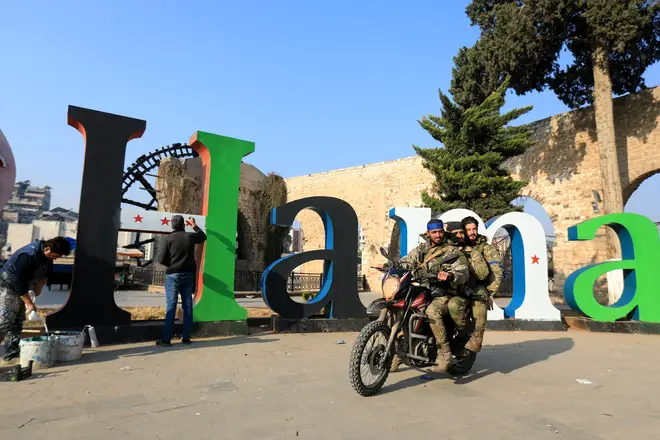
James O'Brien 10am - 1pm
6 December 2024, 18:47

Syrian rebels continued their lightning offensive as they entered two central towns just north of the central city of Homs on Friday, bringing them closer to Syria's third largest city in their advance towards capital Damascus.
Syrian rebels led by the Islamist Hayat Tahrir al-Sham, or HTS, have taken two central towns early on Friday in their advance towards Homs, Syria’s third-largest city.
The break into Rastan and Talbiseh came a day after the group captured the central city of Hama, Syria's fourth largest. The rebel coalition has taken two major cities from Assad’s government in just over a week of fighting.
The rebels have said they will march to Homs and Damascus, President Bashar Al-Assad's seat of power.
Read more: Syria launches counter-attacks after rebels seize Aleppo in brutal surprise offensive
Syrian government forces have been backed by Russia, Iran and their allied groups - but Assad's allies are preoccupied with their own conflicts.
Insurgents are now five kilometres (three miles) away from Homs, according to the Britain-based Syrian Observatory for Human Rights, an opposition war monitor.

The city of Homs is a major intersection point between the capital, Damascus, and Syria's coastal provinces of Latakia and Tartus where Mr Assad enjoys wide support. Homs province is Syria's largest in size and borders Lebanon, Iraq and Jordan.
The observatory said that thousands of Homs residents started fleeing overnight towards the western coast, where embattled Syrian President Bashar al-Assad still maintains control.
Samer AbdelJaber, head of emergency coordination at the UN’s World Food Programme, said the new round of fighting in Syria has displaced about 280,000 people in about a week, warning numbers could swell to 1.5 million.
"The battle of Homs is the mother of all battles and will decide who will rule Syria," said Rami Abdurrahman, the Observatory's chief.
Pro-government Sham FM said the insurgents entered Rastan and Talbiseh without facing any resistance. There was no immediate comment from the Syrian military on whether it had withdrawn from the towns.
State news agency SANA quoted an unnamed military official as saying on Friday that Syrian and Russian air forces are attacking insurgents in Hama province, killing dozens of fighters.

Syria's defence minister said in a televised statement late on Thursday that the withdrawal of government forces from Hama was a tactical measure and vowed to gain back lost areas.
The offensive is being led by HTS as well as an umbrella group of Turkish-backed Syrian militias called the Syrian National Army.
Their sudden capture of the northern city of Aleppo, an ancient business hub, was a stunning prize for Mr Assad's opponents and reignited the conflict which had been largely stalemated for the past few years.
Syria’s civil war - largely considered to be over since a 2020 ceasefire agreement - started after President Bashar Al-Assad used deadly force to crush pro-democracy demonstrations in 2011, which formed part of the Arab Spring uprisings.

Former UK ambassador to Syria Peter Ford joins Matthew Wright
Since then, both opposition factions and the Syrian government have been accused of human rights violations, with many of the abuses attributed to Assad’s regime.
A UN commission found that Assad’s government committed eight massacres between 2012 and 2013, and that opposition forces committed one.
Further allegations of systemic torture, chemical warfare against civilians, forced disappearances and indiscriminate bombing have led to international condemnation and calls for Assad to be prosecuted by the International Criminal Court (ICC).
Around 300,000 civilians were killed because of the war, and around 13 million people have been displaced.